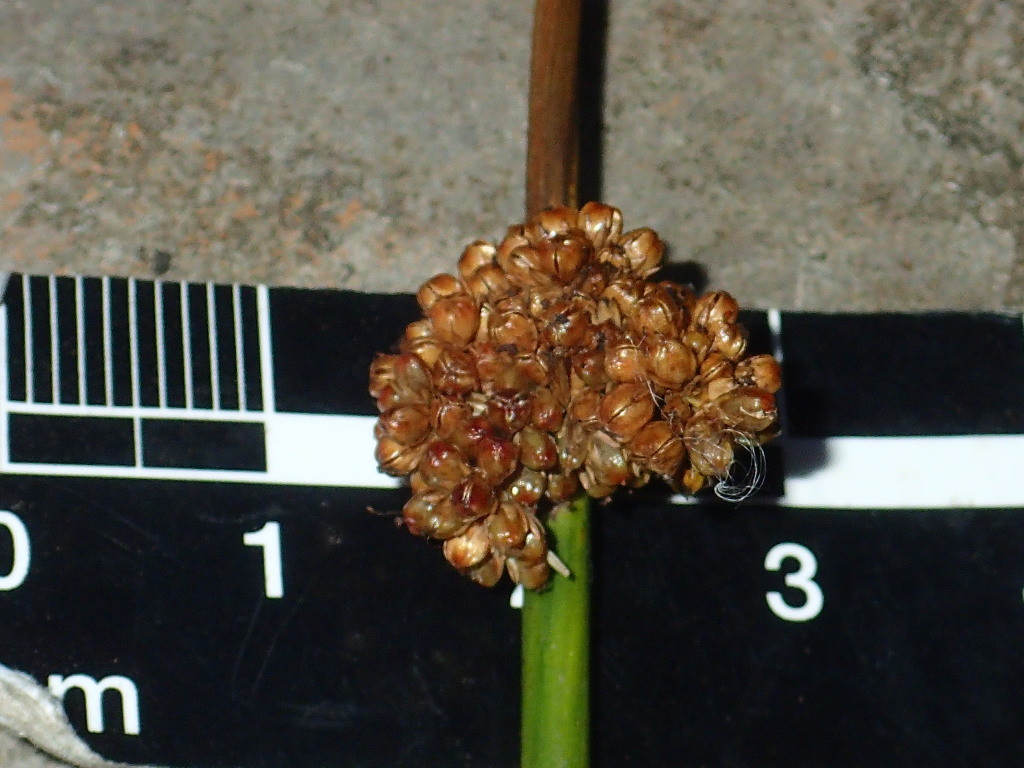Juncus alexandri subsp. alexandri
Densely to loosely tufted perennial with horizontal or ascending rhizomes. Cataphylls brown to reddish-brown towards the base, to 25 cm long. Culms erect, rigid, dull green, 55–170 cm high and 1.5–4 mm diam.; striations 30–70, moderately strongly raised; pith very dense, conspicuously white, continuous or very rarely slightly interrupted; stomates superficial. Inflorescence more or less diffuse, flowers scattered or clustered; primary bract continuous with culm, to c. 13 cm long; prophylls present. Tepals stramineous or with a faint reddish-brown longitudinal band on either side of the stramineous midrib, 1.5–2.4(–2.6)mm long; stamens 3(–5), anthers c. 0.4–0.7 mm long. Capsules exceeding or equalling the tepals, golden-brown, 1.8–2.2(–2.4) mm long. Flowers mostly Dec.–Feb., seeds shed mostly Jan.–Apr.
Wim, GipP, CVU, NIS, EGU, HSF, HNF, MonT, HFE, VAlp. Also NSW, ACT. A relatively common species of cool temperate rainforest, montane forests and scrubs, subalpine woodland and wet treeless high altitude communities. Occasionally descends to lower altitudes in areas prone to cold air drainage.
Juncus alexandri subsp. melanobasis from NSW (on the higher North Coast ranges, and Northern and Southern Tablelands) differs from subsp. alexandri in having darker cataphylls and longer tepals. Juncus alexandri subsp. alexandri is similar to J. bassianus (see notes under that species). A few specimens of J. gregiflorus (for example from the Otway Range and Lake Mountain) have unusually dense pith and closely resemble J. alexandri subsp. alexandri. However, such specimens always have at least partially interrupted pith, softer, more easily compressed culms, and tend to have longer primary bracts and darker capsule apices. Furthermore, when J. gregiflorus culms are examined in transverse section the epidermal cells of the striations are not radially elongated, unlike those of J. alexandri subsp. alexandri in which the epidermal cells are radially elongated. Rare specimens of J. alexandri subsp. alexandri with slightly interrupted pith resemble J. brevibracteus but are distinguished by the fewer, coarser and more strongly raised culm striations.
Albrecht, D.E. (1994). Juncus. In: Walsh, N.G.; Entwisle, T.J., Flora of Victoria Vol. 2, Ferns and Allied Plants, Conifers and Monocotyledons, pp. 197–233. Inkata Press, Melbourne.
 Spinning
Spinning
